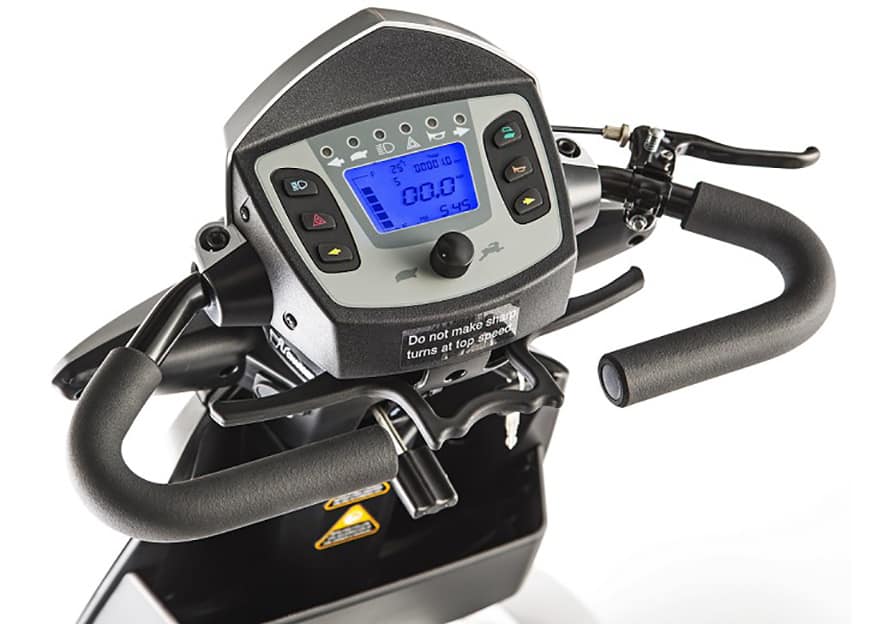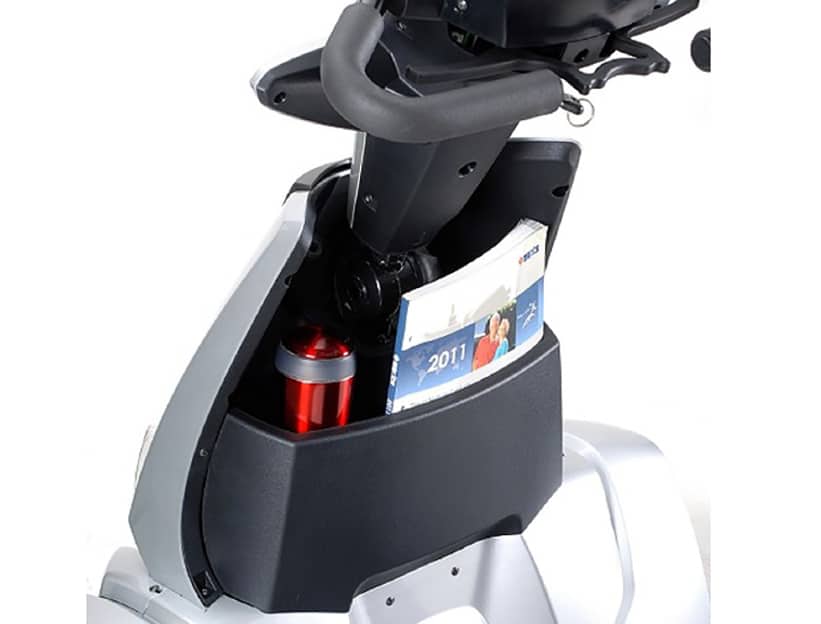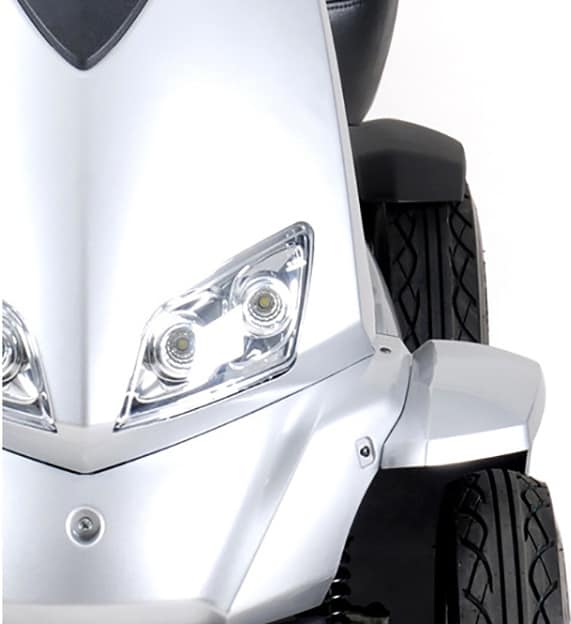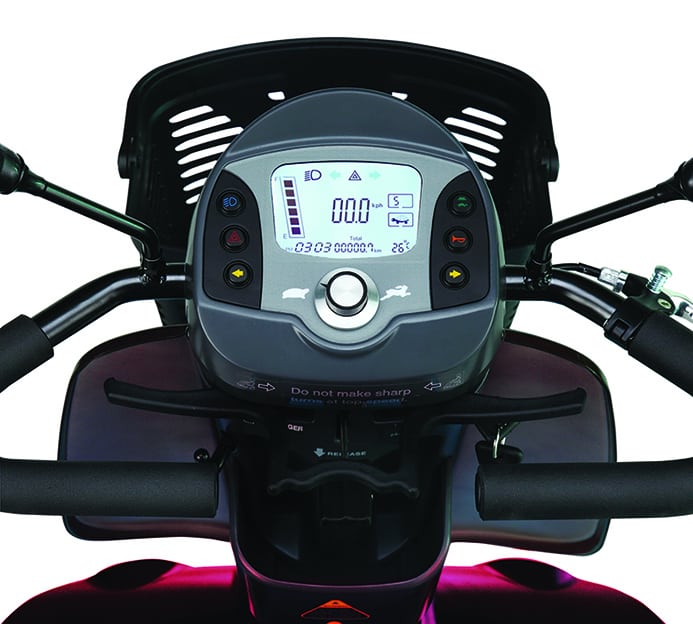Frequently asked questions
Product overview

Here are the answers to some of the most frequently asked questions we get about Merits Australia products.
NO, under the current road traffic rules a scooter is classified in the same category as an electric wheelchair and therefore there are no licensing requirements.
Yes, in fact the traffic regulations state that a scooter must be ridden on the footpath where there is one available. Should there be no suitable footpath available then you are entitled to ride on the road providing you act in the manner of a pedestrian.
Yes, occasionally you hear stories of people tipping over or other problems. In almost all cases the problem is caused through user error, at all times your scooter should be ridden within it’s capabilities. When you have your in-home demonstration, or when you purchase your scooter, the sales staff should provide as much training as you feel necessary and will also guide you on the safe use of the scooter. Your owner’s manual, provided with your new scooter, will have a section on safe operation of the scooter. We strongly urge you read this and make sure you follow the instructions given to ensure your own safety.
Yes, although there are various lengths and widths, all scooters (with a few small exceptions) will fit through any standard doorway.
Yes, some scooters will be allowed with the current regulations regarding access cabs & buses. If this is something you need to do then it is important to check current regulations in your state.
Yes, nearly all scooters are fitted with a “free wheel” facility. This means the brakes can be released to enable the scooter to be pushed. The operation of this “free wheel” facility differs from scooter to scooter and your owner’s manual will have this detail in it.
It is also important to consider the price or value for money of the scooter, the cheapest is not necessarily the best. It is more important that the features and benefits of the scooter suit your needs. When comparing second hand to new, it’s also helpful to ask if the second hand unit has a warranty, what condition are the batteries & charger in and when will they need to be replaced.
Product selection

Your mobility scooter is an important part of your life and will give you great assistance with mobility so it is important to make the best choice you can. Part of the process is asking the questions you have from a reputable dealer that you can trust. Mobility scooters are available in different sizes and with many different features as there is not one scooter that will suit everybody, so you need to purchase the one that is best suited to you and your needs.
Here are some points you might like to consider before choosing a scooter.
- How far you intend to travel and where would you like to go with the scooter.
- Where the scooter is going to be stored.
- The price or value for money of the scooter.
Small scooters or Pull Apart scooters are designed to transport in a vehicle to a shopping centre or similar & use around the flat area, with 14a/h – 22a/h batteries the distance you could expect is approx. 10 – 18km’s*.
Small Folding scooters are designed to be compact & easy for transport for people who are traveling on holidays either by car, air or cruise ships, some of these scooters are using new Lithium-Ion battery technology (small compact lightweight batteries with similar distances to the larger heavier batteries in the pull apart scooters).
Medium scooters are designed to travel locally to your shopping centre, doctors, parks, visit friends etc, with 34a/h – 50a/h batteries the distance you could expect is approx. 20 – 30km’s*.
Large scooters are designed to travel locally to your shopping centre, doctors, parks, visit friends but with larger batteries are capable of travelling larger distances more hilly terrains and generally have a higher weight capacity, with 60a/h – 110a/h batteries the distance you could expect is approx. 40 – 60km’s*.
*Distance also depends on terrain, weight of the user and condition of the batteries.
Product care

Regular servicing and care is the best way to protect your mobility products, and guard against inconvenient breakdowns. Although there is very little you need to do to maintain your scooter, a few regular checks and services can ensure your purchase is kept in tip top shape and can provide you with freedom over the long term.
Manufacturers recommend 12 monthly services. A basic service takes about 1-2 hours. Services may be able to be carried out at the client’s home or at the workshop. Check with your service agent for more information.
Power wheelchairs and scooters that are used heavily, like golf scooters or that is carrying heavier payloads or used mainly in steep hilly areas, should be given a major check over every 3 – 4 years.
It is important to know that whatever scooter you purchase, you should have room to store it. If your scooter will be stored outside we recommend a weather proof cover to protect your investment. It is also important that you have power point access as the scooter comes with a battery charger which needs to be plugged into the scooter when the scooter is not in use.
If your scooter gets dirty, be sure to deal with the dust, dirt, and debris as soon as you can. If it’s wet, dry it off. These little things go a long way to avoid bigger problems down the road.
Weekly checks
- Do a quick surface cleaning, even if your scooter looks clean. Use a soft, damp cloth and use cleaners when appropriate (consult your manual or service agent). It might help to designate a specific day so you don’t forget.
- Check the air pressure on your tires and fill them if they need it (check your owner’s manual for the proper PSI for your tires). Do a quick visual inspection for any signs of puncture, foreign objects or cracks.
Monthly checks
- Examine your tire treads and make sure they have not worn down or under inflated.
Yearly checks
- Bring your scooter in for a full inspection. A trained scooter technician will be able to spot small problems you may not have noticed yet, and taking care of them now will help avoid more costly repairs down the road.
Batteries

Yes, all scooters come complete with a charger”. It is simply a matter of plugging into a mains outlet and the scooter and turning on a switch. The chargers are self-regulating therefore there is nothing for you to worry about.
It can take up to 8 Hrs or more to recharge the batteries depending on battery and charger size. The mobility aid should be charged once a week if not being used for long periods. Mobility scooters batteries cannot be overcharged as the charger regulates the charging process.
Whenever you are not using your scooter it should be on the charger, the charger is self-regulating so there is no fear of “over charging”. Leaving the scooter on the charger at all times when not in use will ensure your scooter is ready to go when you are and it will help maintain the life of your batteries, as they like to be constantly charged up.
Very little, we are reliably informed that the cost to charge batteries using a regulated type charger is minimal. Given that the average time taken to charge a set of batteries is around 8 to 10 hours, we understand that the cost would only be a few cents per day.
The distance you can travel will vary dependent upon the size of the batteries the scooter has, the terrain it is to be used on and the weight of the user. The sales staff can provide advice on what is best for you after determining your needs and will then be able to advise you on the distance you will be able to travel on your new scooter.
As far as the battery life is concerned there are variations depending on a number of factors, the size of the batteries, the conditions under which they are used, amount of work they do, etc. Generally speaking, you would reasonably expect to get somewhere between 1 and 2 years out of the less expensive batteries and anywhere from 2 to 5 years out of the top-quality ones.
Batteries are maintenance free: they can be tipped over, etc without spilling and they don’t need to be topped up with water. In general, the life of a deep cycle battery is determined by its quality and by how many cycles it has been through – usually in the vicinity of 200-300 cycles if discharged fully, but more cycles if it is only partially discharged. Batteries reach their peak performance after about 20 cycles.
If the battery is discharged by only 20% and then recharged, it will last longer than one that is discharged by 60% and recharged – i.e. it will have more cycles. Batteries also last longer if they are stored in a charged state, not a discharged state. So it is best if your scooter is charged every night after use. Leaving a battery in a discharged state can damage the battery.

